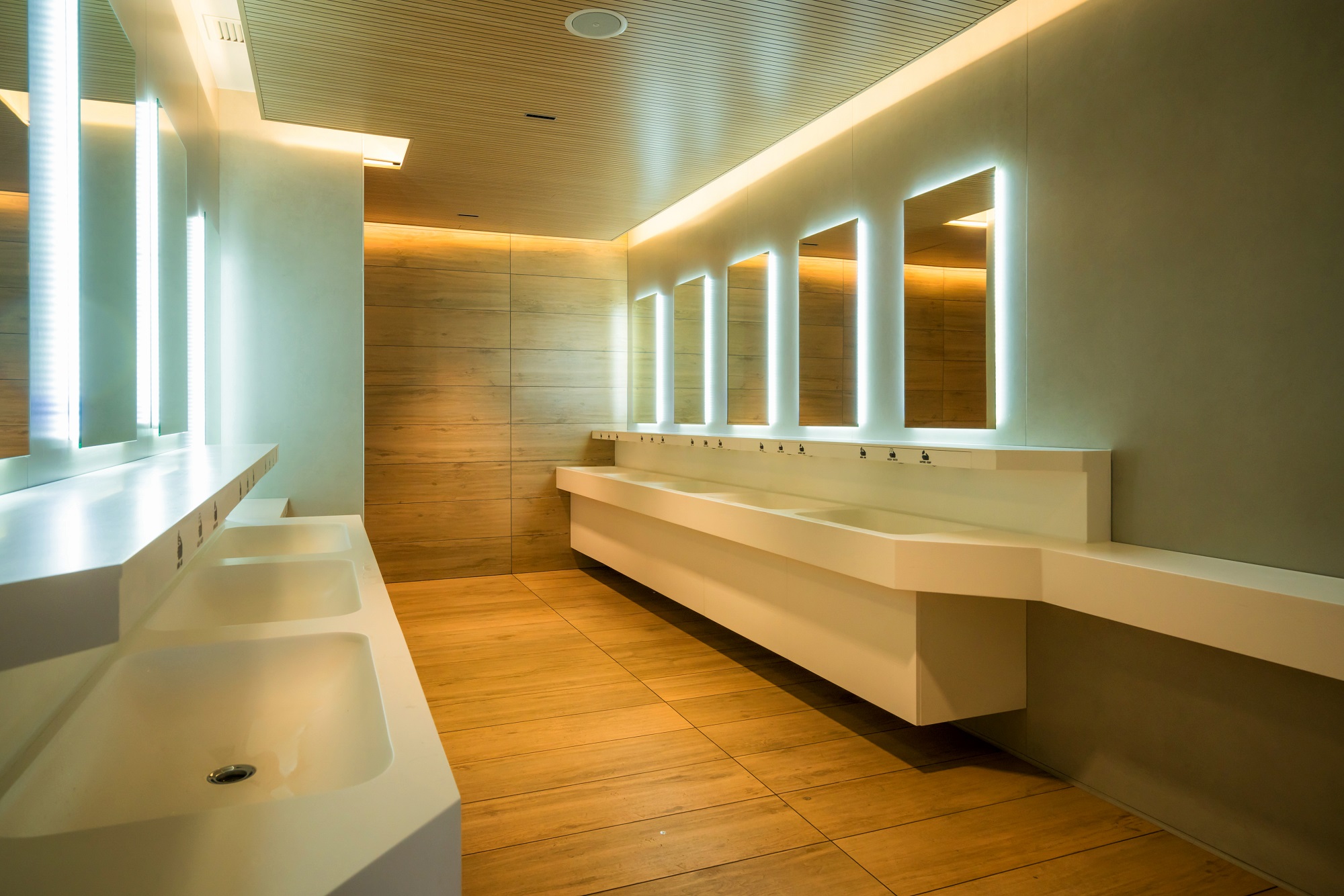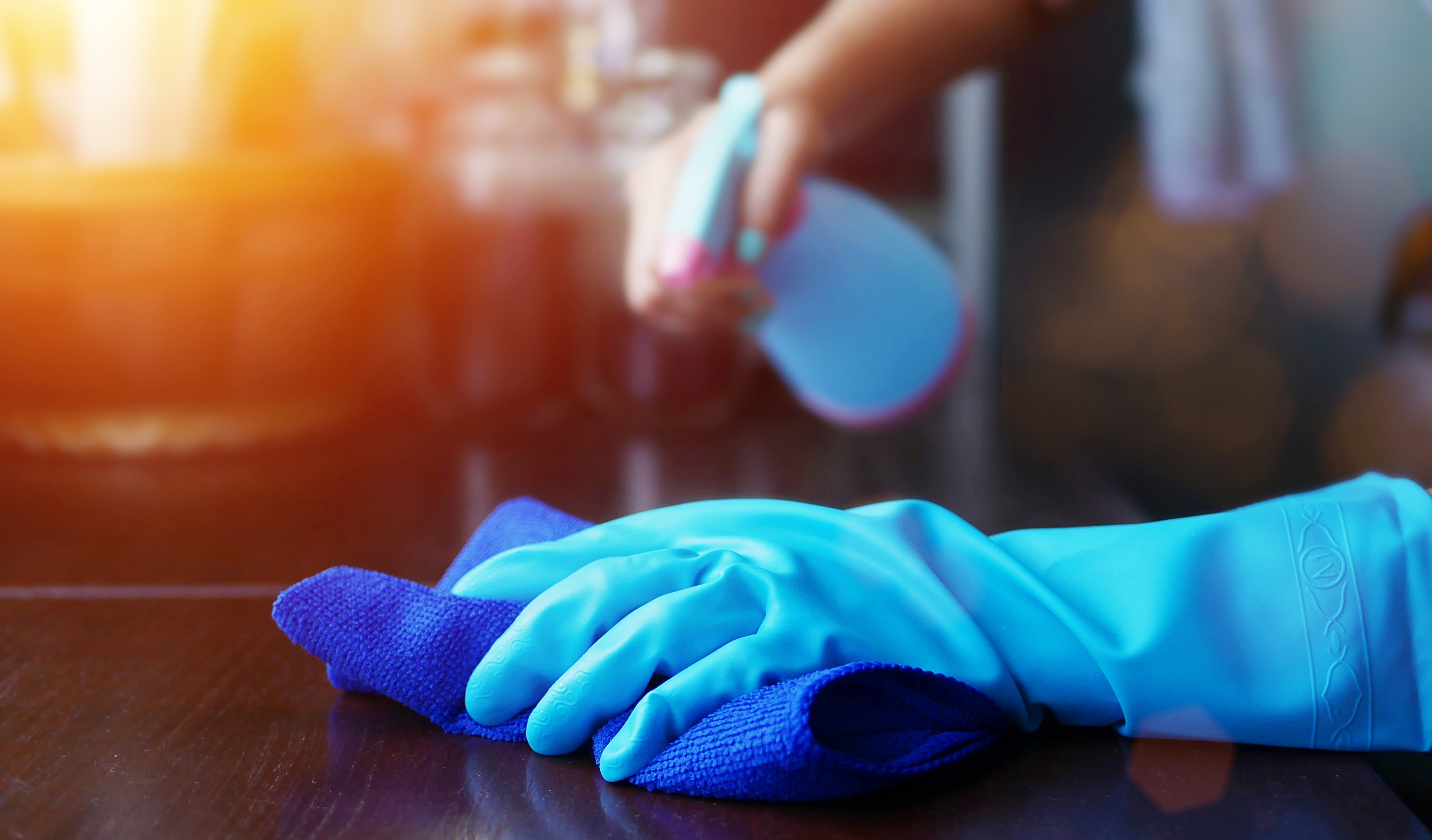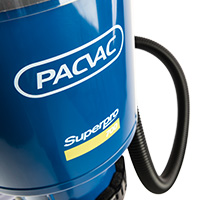
On the back of smart technology and high-quality products, commercial businesses are seeking to up the ante with restrooms in their properties to build loyalty with their employees and customers – and protect their brand.
For an insight into how once-humble restrooms are being taken to new heights, consider two examples in Queensland.
Brisbane Airport has unveiled Australia’s first ‘airside animal assistance bathrooms’ that provide special toilet and watering facilities for Guide Dogs and other support animals.
Meanwhile, at the Robina Town Centre on the Gold Coast, the Queensland Investment Corporation has spent millions of dollars on an upgraded restroom area that caters for families and includes a secure children’s play area, quiet feeding areas, change tables, access for the disabled and even a microwave.
The initiatives showcase how, in the wake of COVID-19, smart facility owners and managers are delivering a premium experience for employees and customers that demonstrates a level of care, as well as committing to ever-improving levels of cleaning and hygiene.
“There may be additional costs with such facilities, but it will be repaid 10-fold,” says Greg Crisp, sector manager – facility management for Bunzl Australia & New Zealand.
He says it is clear people are demanding improved hygiene standards in restrooms as a result of the pandemic.
“The days of walking into a dirty toilet with no soap and no hand towel should be over,” he says.
“That’s a direct reflection on that business and people are voting with their feet.”
Comfort in vogue
At Solaris Paper, which distributes high-quality toilet and tissue products, national field and account manager Jeff Lewis expects that after two years of predominantly working from home, many employees will want “some of the comforts of home” as they return to office work.
Likewise, in aged-care facilities, elderly residents and their families want nicer touches in restrooms, including products that are softer on frail skin.
Lewis says there are increasing demands in the commercial space for hand moisturisers, softer and super absorbent TAD hand towels, and quality toilet paper.
“Facility managers tend to be blokes and their KPIs have in the past focused on cost. But females often complain about quality of toilet paper in offices. It’s often the little things that show you care and these women rightly say, ‘You’re giving us tough, crunchy toilet paper’.”
In response, Solaris Paper has in the past year introduced its Sorbent Professional line to offer paper products for the away-from-home market to draw on the massive brand recognition that Sorbent has with home users. It will complement the company’s business-to-business brand, Livi.
While there has been an influx of technology advances and Internet of Things-connected devices, such as no-touch handtowel and soap dispensers, Lewis says the advantages of such initiatives should be weighed up against functionality.
“The fewer moving parts, the better,” he says.
“If you go into a top restaurant, the whole experience can be ruined if the restroom is smelly, and you have broken-down dispensers. Then you start questioning what the hygiene is like in the rest of that establishment.”
Doug Bolzon, CEO of cleaning products and systems supplier Dominant, agrees that automated dispenser systems can be a “double-edged sword because they need to be maintained, especially if they’re battery operated”.
“There’s no worse experience than going to a dispenser and it doesn’t work,” he says.
To offset such risks, Dominant is rolling out dispensers with a larger cannister capacity, while it is also meeting demand for high-quality, fragranced hand cleansers and personal care products through its Luna brand.
The range has been developed for a commercial space that could easily be placed in a high-end residential bathroom.
“We’re finding that customers are also willing to pay more for such products if required,” Bolzon says.
“In the past, traditional products in the B2B model were based mainly on price, rather than the needs of the end user.”
With this new emphasis on hand sanitisers and other hygiene-related products, Bolzon expects this emphasis on quality to persist.
“People are not using something they have to use. They’re now using something they want to use.”
Crisp is confident that technology has a key role to play in ensuring that restrooms function smoothly, including through the use of cleaning-management software that increases efficiency and improves hygiene in public spaces by optimising cleaning resources.
Such platforms are designed to track key data such as completed cleaning tasks, cleaning frequency, and traffic patterns. Live-reporting functions can validate cleaning activities and reassure restroom users that health and safety issues are being addressed.
“We want to make sure toilets are being cleaned at the best possible time, not just on a rotational basis,” Crisp says. “We need cleaners to be using their time effectively and when it’s needed the most.”
Crisp is also observing greater attention to the aesthetics of equipment such as dispensers, with wraps featuring attractive designs becoming more common.
“In this way, they are a feature of restrooms, rather than just being plain ugly.”
Science determines best-practice
Given the hygiene imperative in restrooms in the wake of COVID-19, it has never been more important to make the right product choices.
To that end, research from a few years ago is informative in the debate between hand towels and conventional jet-air hand dryers.
The international study, led by University of Leeds microbiologist Mark Wilcox, revealed that jet-air dryers in hospital toilets spread more germs than disposable paper towels and should not be used.
It noted that the problem starts when people do not wash their hands properly and then, when using a jet-air dryer, the microbes get blown off and spread around the restroom.
By contrast, paper towels are better at absorbing water and microbes left on the hands and, if they are disposed of properly, there is less potential for cross-contamination.
Lewis says after years of investment in jet-air dryers, many facility managers are switching back to hand towels as a result of COVID-19.
“Often what I’m seeing now is that bathrooms have both,” he says.
“They haven’t ripped out the air dryers, but they’re also offering hand towels.”
He believes the fallout from the pandemic will reaffirm the trend.
“We know now that air dryers just blow around the germs. In the past blowing around the germs was not such an issue, but with COVID and knowing how airborne it is, of course it’s much more of a concern.”
According to Crisp, good systems featuring recognised brands are likely to increasingly gain favour among facility managers who are conscious of good hygiene in restrooms.
“That will give people a lot more confidence. We’ve come out of a decade of cutting costs out of washroom spaces. Things like hand dryers have become a cheaper alternative, but they’re a lot less effective and now we’re paying the price for that and we’re forced in some ways to look for those better systems.”
He expects more robust checks and audits of restroom spaces to also become the norm as manufacturers and distributors combine with facility managers to set guidelines for hygiene expectations and outcomes.
No turning back
For Bolzon, the trend towards a better user experience for people in restrooms is here to stay. Consumers and employees are more aware of high-touch points and the need for skin-friendly moisturisers and sanitisers.
“And businesses now appreciate that their customers want a better experience. The higher end of town has always been doing it, but now the standards have been raised across the board. It’s now almost something that you’re measured against.”
As Australia weighs up its response to the pandemic, Crisp says it is instructive to consider best-practice in nations such as Singapore (where restroom innovation and cleanliness receives considerable support) and Canada (which is innovating through the minimisation of touch points in restroom entries and making surface wipes available to the public).
“Some facilities are paying a lot of attention to this issue,” Crisp says. “For others, if they don’t review their processes and systems, it will be too late.”
Three key tips
Dominant’s Doug Bolzon offers three important pieces of advice for cleaning and hygiene companies as they seek to contribute to better restroom experiences.
- Communicate with facility managers – discuss improvements such as using larger-capacity dispenser cannisters and longer-lasting batteries in automatic dispensers. “We’re communicating more and more with facility managers, but their awareness is up the dial, too. They’re more diligent than ever in checking these things because they’ll hear from customers if things are not right.”
- Consolidate your product range – minimising your range of disinfectants and surfactants to quality, specialised products can make it easier for all parties. “That way they get the right product for one application. And with high staff turnover, the training component often needs to happen quickly, so having easy-to-use systems within a consolidated product range can really help that education process.”
- Focus on floorcare – Bolzon comments that floors are often the “forgotten part” of the restroom hygiene story. As potentially the dirtiest part of any facility, they need to be cleaned and maintained.
This article was first published in the November/December issue of INCLEAN magazine
[Sources]
leeds.ac.uk/news/article/4284/jet-air_dryers_should_not_be_used_in_hospital_toilets
Paper Towels Better Than Air Dryers to Stop Virus Spread (healthline.com)
WandaNEXT™ Digital Cleaning Management – Bunzl Cleaning & Hygiene (bunzlch.ca)




